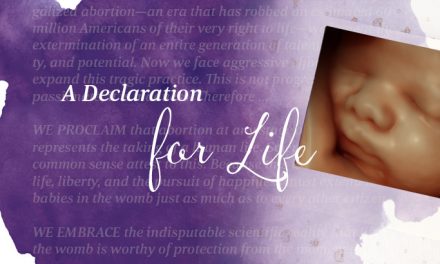Efforts to defund Planned Parenthood have mostly resulted in a string of failures. Despite evidence of questionable activity and morally compromised leadership at the national and regional level, Planned Parenthood still received more than $550 million in federal funds last year.
It looks like that might be about change.
Last week, the Department of Health and Human Services (HHS) announced changes to Title X, a government funded grant program that helps about four million low-income people receive family planning services. In 2017, the budget for the program was around $286.5 million, of which Planned Parenthood usually receives around $60 million.
Although Title X is a little more than 10% of all the money the abortion business receives from the federal government, the loss of those funds would still be significant. Here are the three top regulations instituted by HHS that will restrict Title X funds to Planned Parenthood and other abortion clinics:
- Physical Separation: In these new regulations, abortion clinics must now perform abortions at a physically separate location from where Title X services are offered, to continue receiving the federal grant. This separation even extends to different waiting rooms.
- Financial Separation: Many in the pro-life community are deeply concerned that the money designated for family planning services somehow supports or promotes abortion services by freeing up clinic funds for those procedures. The new financial separation regulations would force places like Planned Parenthood into greater accountability and transparency through closer oversight of their finances, something Planned Parenthood will not like.
- No Abortion Referrals: The last of the three big changes is that any organization receiving Title X funding is strictly prohibited from referring abortions. Patients may request information on abortion and that information must be given, but pro-life doctors and medical professionals will no longer be forced to give patients a list of doctors willing to perform abortions. (This new rule is in keeping with the Supreme Court decision in NIFLA v. Becerra, where California was found to have violated the rights of pro-life pregnancy centers by compelling them to provide such information.)
These are common sense rules and regulations, but abortion activists don’t see it that way. Instead, they argue that this institutes a gag rule that is “an attack on poor women and people of color who often have no other avenues to care.” That was the argument that Dr. Leana Wen, president of Planned Parenthood, made on her Twitter account.
Her statement isn’t true.
Women and families will continue to have access to family planning services—these new regulations will just force abortion clinics to act with more transparency and integrity. That’s something that an organization like Planned Parenthood, which thrives on deceit and a false narrative, will hate. This will also help protect pro-life pregnancy resource centers, who want to help women who are dealing with an unplanned pregnancy, without being forced to provide abortion referrals that run contrary to their mission.
This regulation will not completely defund Planned Parenthood, but the abortion business will likely lose access to tens of millions of dollars. Abortion advocates are already preparing for a legal challenge and this could drag out for years. Unfortunately, abortion and $500 million in federal Medicaid funds will remain available for the foreseeable future. This is hopefully the first positive step in a long fight.
Despite the hysterical reaction from abortion advocates, women interested in having an abortion will be able to find one. That won’t change in the near future. The only thing that will change is the ability of abortion clinics to possibly use federal funds to illegally supplement abortion services.






